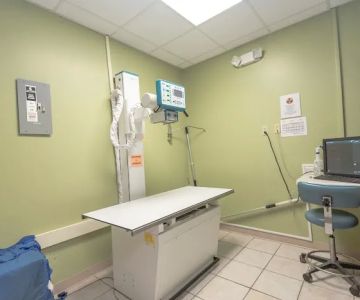What Does a Critical Care Veterinarian Do?
As pet owners, we all know how important our furry friends are to us, and when they face serious health issues, we turn to professionals for help. But what happens when your pet requires more than just a regular check-up or treatment? That’s where a critical care veterinarian comes in. In this article, we'll explore the role of critical care veterinarians, what they do, and how they impact the health and well-being of pets in need of urgent care.
1. Understanding the Role of Critical Care Veterinarians
Critical care veterinarians are specialized professionals who handle the most severe, life-threatening conditions in pets. They are trained to treat animals experiencing emergencies, such as trauma, surgery recovery, poisoning, organ failure, or respiratory distress. Their role is to stabilize the animal, provide immediate treatment, and help them recover as much as possible. But this job goes beyond just providing care—it’s about making quick decisions under pressure while ensuring the best outcome for the pet and the owner.
2. Key Skills and Training Required
Becoming a critical care veterinarian requires extensive education and hands-on training. Most veterinarians need a Doctor of Veterinary Medicine (DVM) degree, which typically takes four years of education after completing a bachelor's degree. After obtaining their DVM, they must complete an internship, followed by a residency in critical care, which can take additional years of specialized training. They also often pursue certification from professional organizations like the American College of Veterinary Emergency and Critical Care (ACVECC) to further enhance their expertise.
3. Common Conditions Treated by Critical Care Veterinarians
Critical care veterinarians deal with a wide variety of cases that require quick thinking and specialized knowledge. Some of the most common conditions include:
- Trauma and Injury – This can include car accidents, falls, or animal bites.
- Respiratory Distress – Difficulty breathing or collapse of lung function due to various causes.
- Poisoning – Ingestion of toxic substances like chemicals, plants, or spoiled food.
- Organ Failure – Damage to vital organs like kidneys, liver, or heart.
- Severe Infections – Infections that could lead to septic shock if not treated immediately.
Each of these conditions requires a critical care veterinarian to make rapid assessments, provide immediate treatment, and monitor the pet’s progress around the clock. These professionals are usually found in veterinary hospitals or emergency clinics that offer 24/7 services.
4. Equipment and Technology Used in Critical Care
Critical care veterinarians often rely on advanced technology and equipment to monitor and treat pets. This includes:
- Advanced imaging tools – X-rays, MRIs, and CT scans are commonly used to assess internal injuries or disease.
- Monitoring devices – These help track vital signs such as heart rate, blood pressure, oxygen levels, and temperature.
- IV therapy – Essential for hydration and the administration of medication or fluids directly into the bloodstream.
- Intensive care units (ICUs) – Specially designed units to monitor and care for pets in critical condition.
These tools are invaluable for making informed decisions quickly, ensuring that pets receive the best possible care during their critical moments.
5. The Emotional and Psychological Aspects of Critical Care
Being a critical care veterinarian is not only about treating the physical needs of an animal; it’s also about supporting pet owners through emotionally charged situations. As a critical care veterinarian, it’s crucial to communicate clearly and compassionately with the pet owner, helping them understand the severity of the situation and the treatment options available. While the process can be stressful for both the pet and the owner, a skilled veterinarian offers reassurance and guidance every step of the way.
6. When to Visit a Critical Care Veterinarian
If your pet faces a medical emergency, it’s important to seek immediate care. Knowing when to visit a critical care veterinarian can save your pet’s life. Signs that indicate you should contact an emergency vet include:
- Severe bleeding or wounds
- Difficulty breathing or choking
- Severe vomiting or diarrhea
- Loss of consciousness or sudden collapse
- Poisoning or ingestion of harmful substances
Time is critical in these situations, so it’s always better to err on the side of caution and contact a critical care veterinarian if you are uncertain about your pet’s condition.
Conclusion
A critical care veterinarian plays a vital role in ensuring that pets in emergency situations receive the best care possible. With their specialized skills, advanced tools, and compassionate approach, these professionals provide life-saving treatment and comfort to pets and their owners. If your pet is ever in a critical situation, trust a certified critical care veterinarian to provide the best possible chance for recovery.
For more information on veterinary care and how to find the right emergency services for your pets, visit [Hidden Brook Veterinary].











